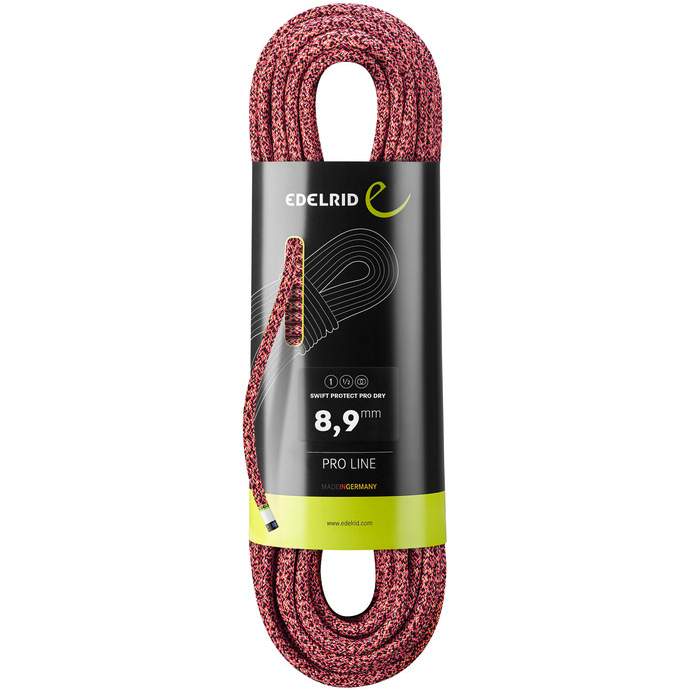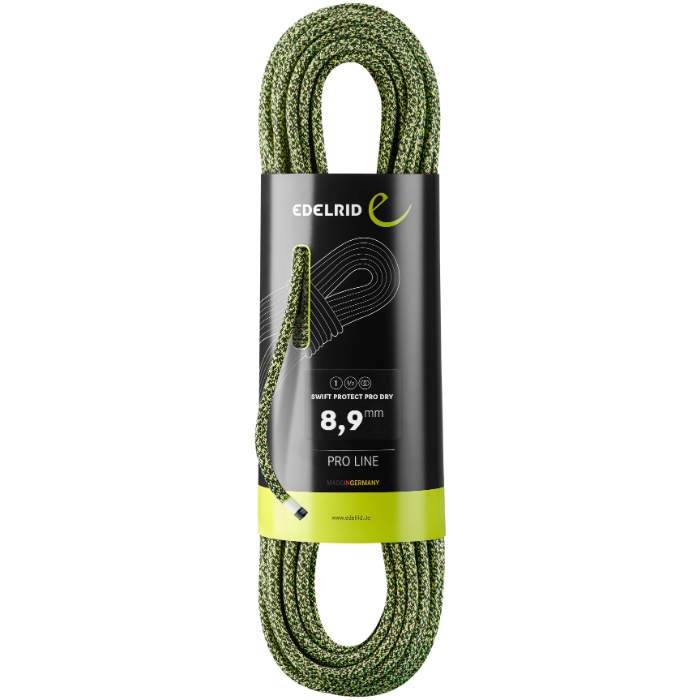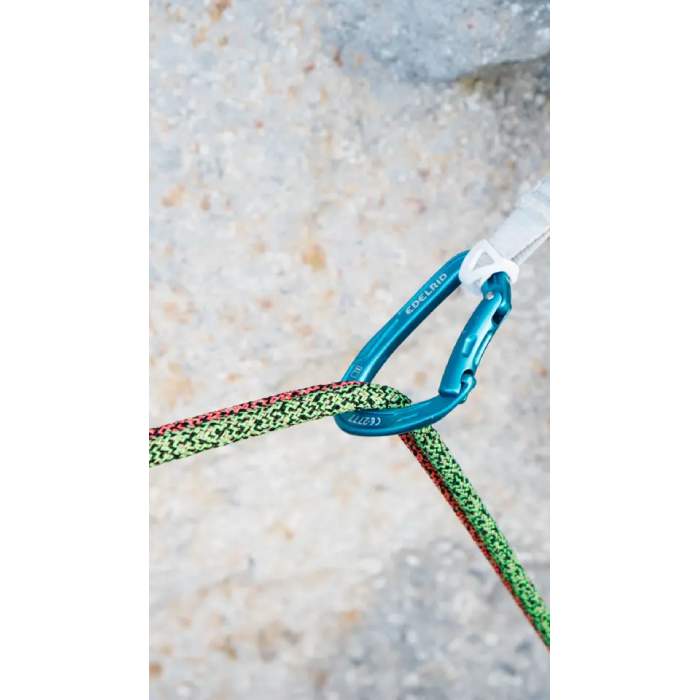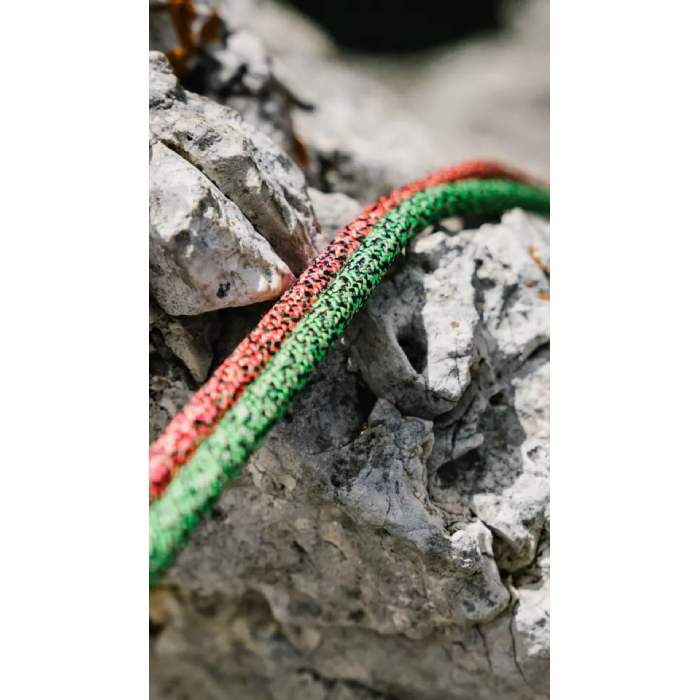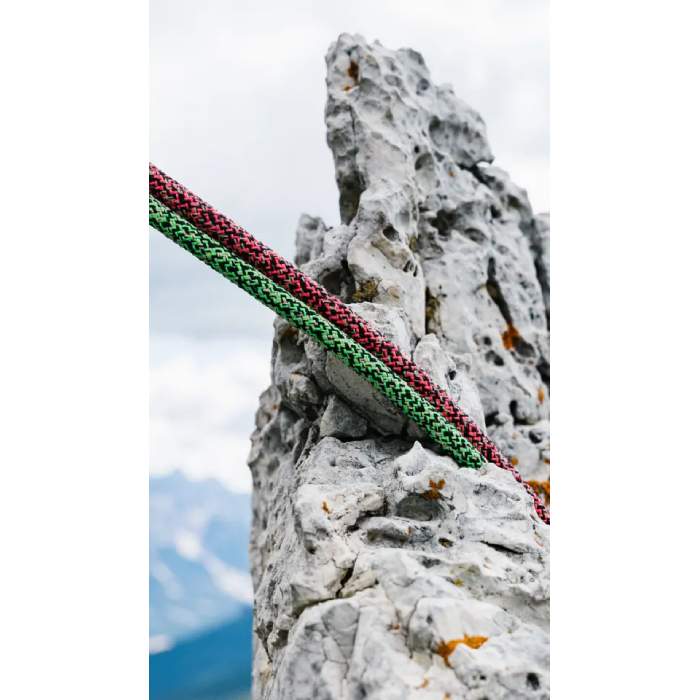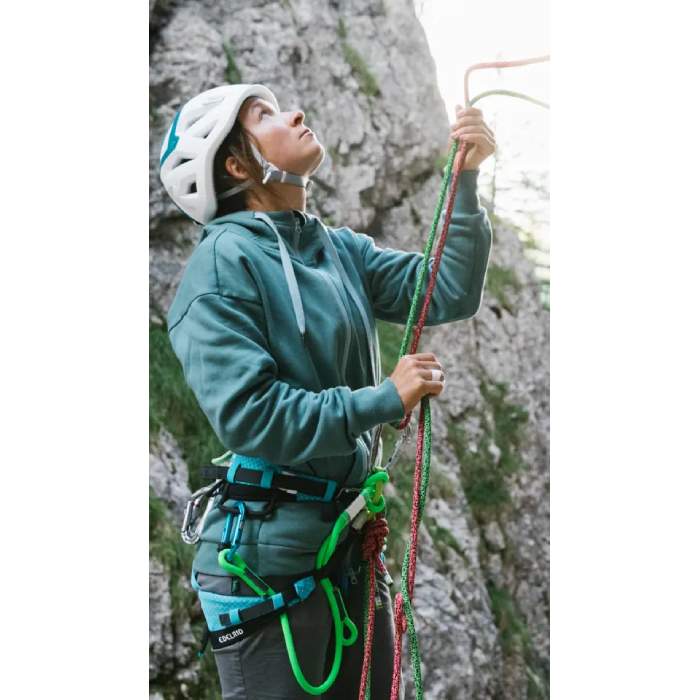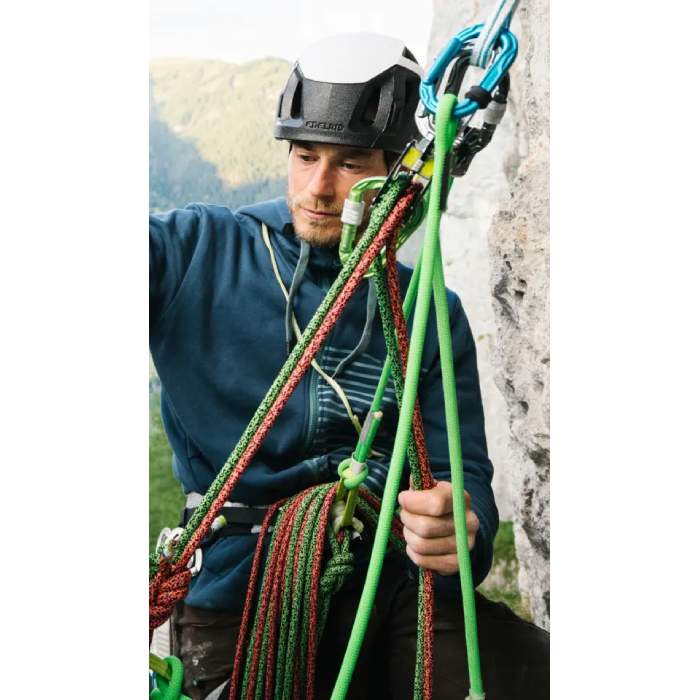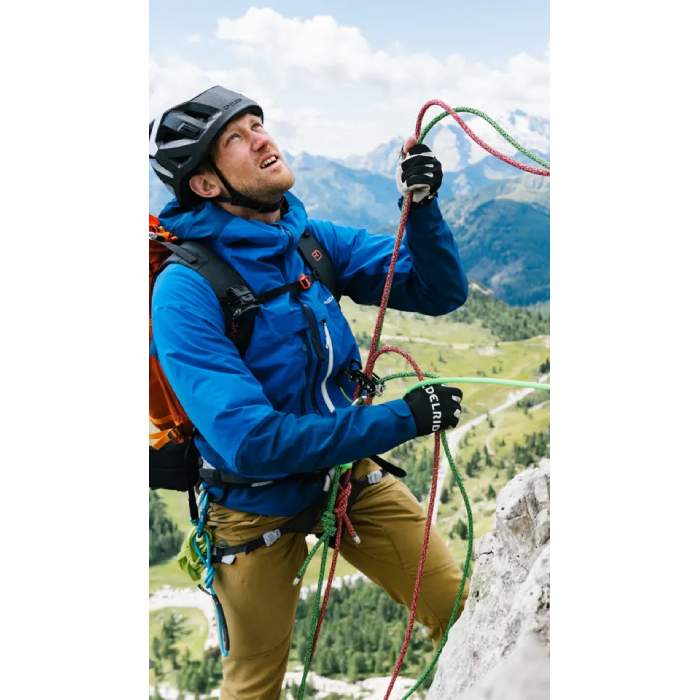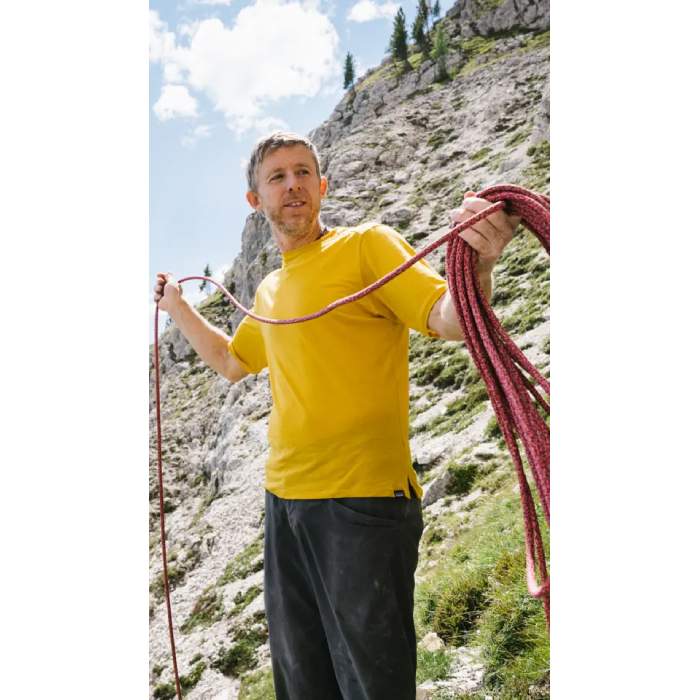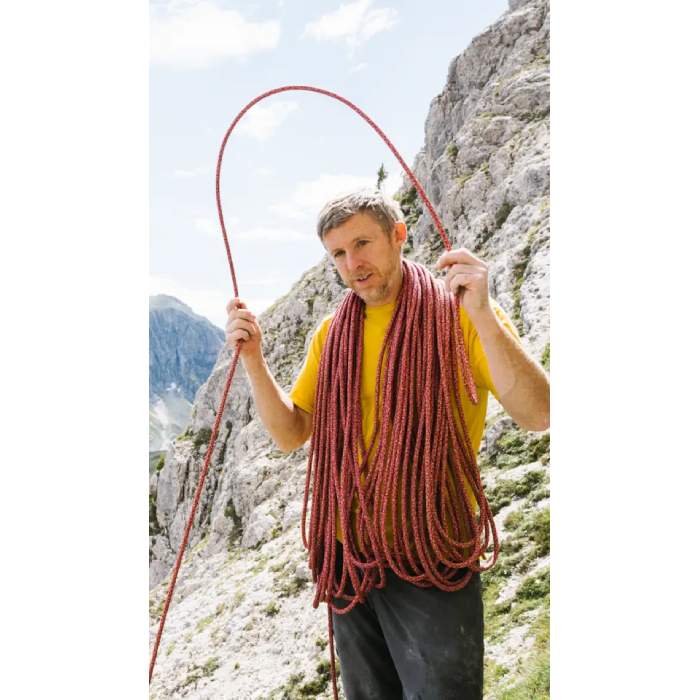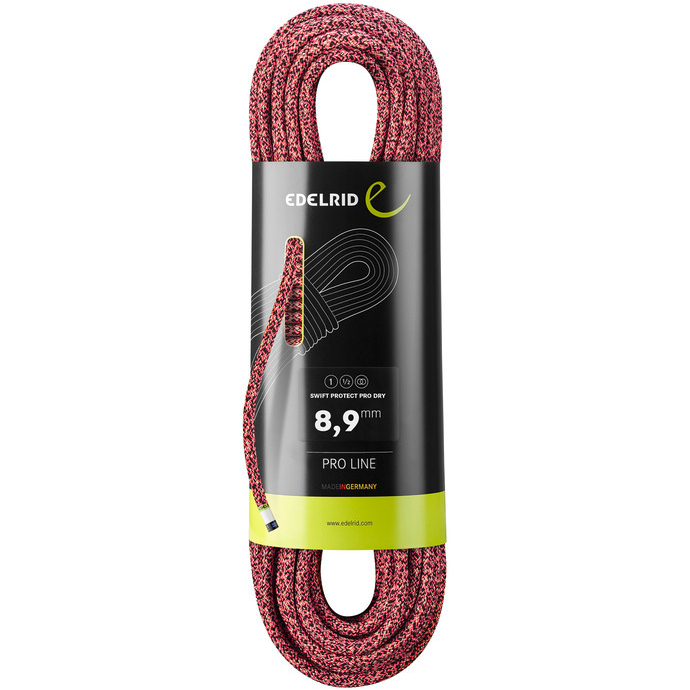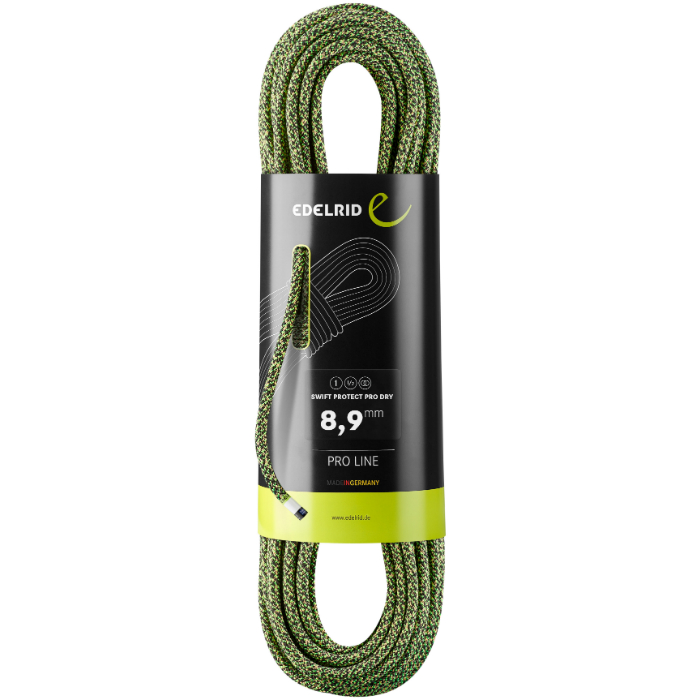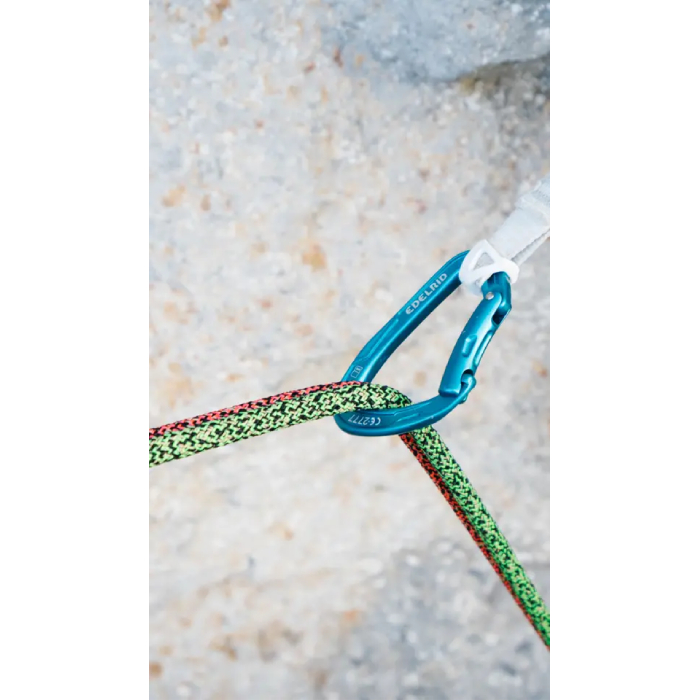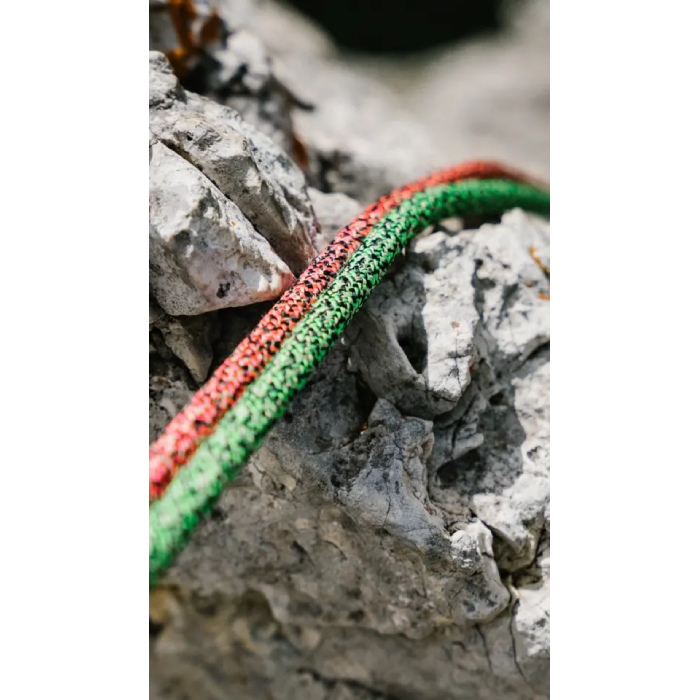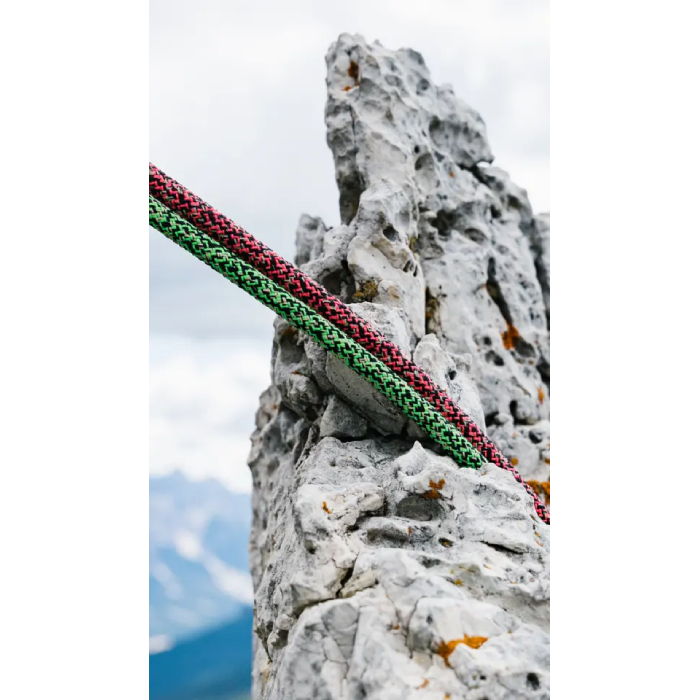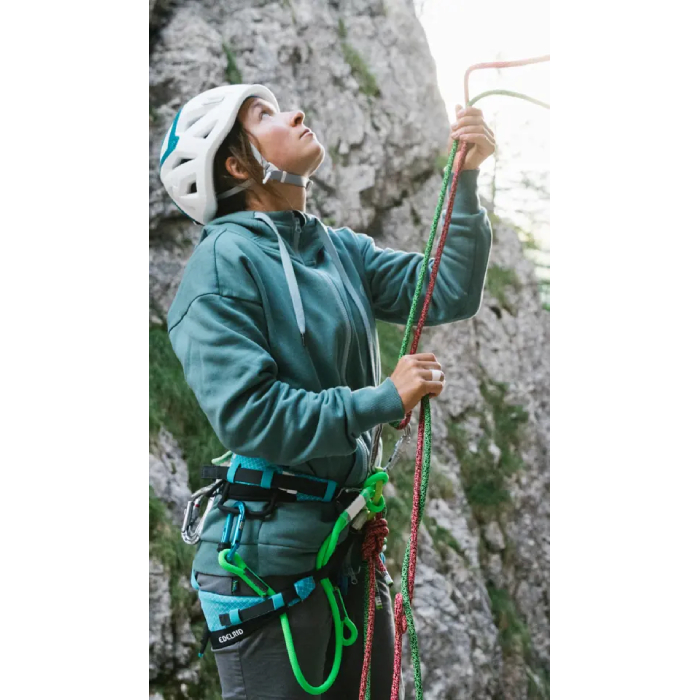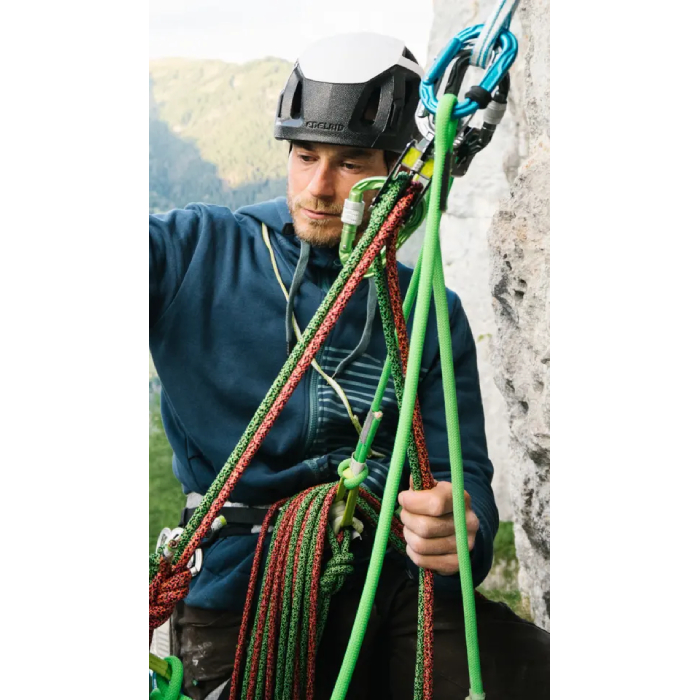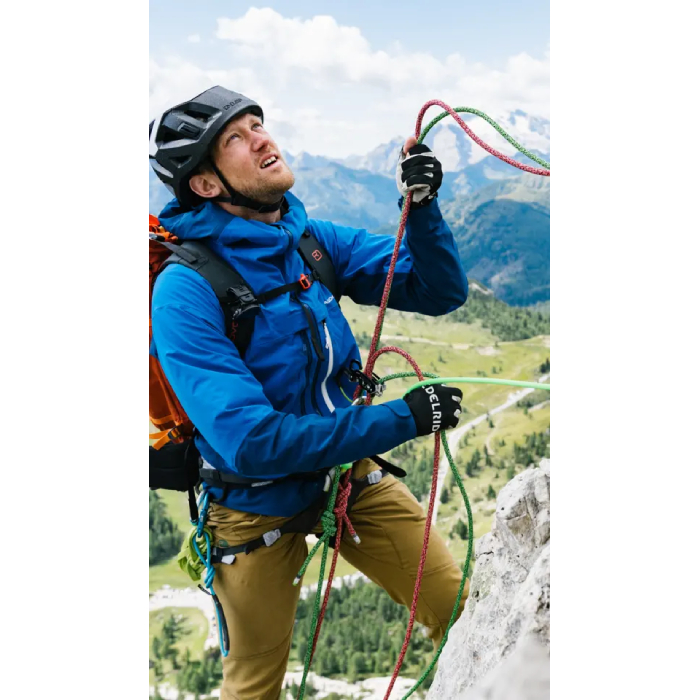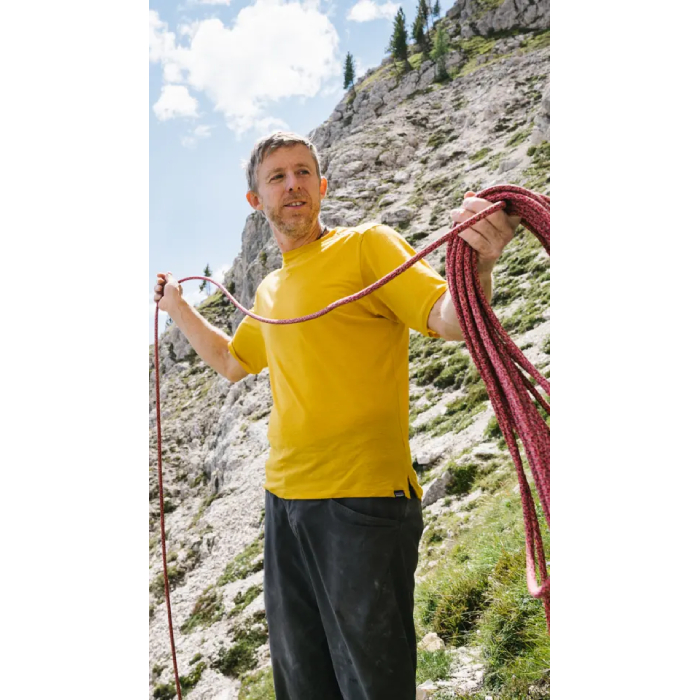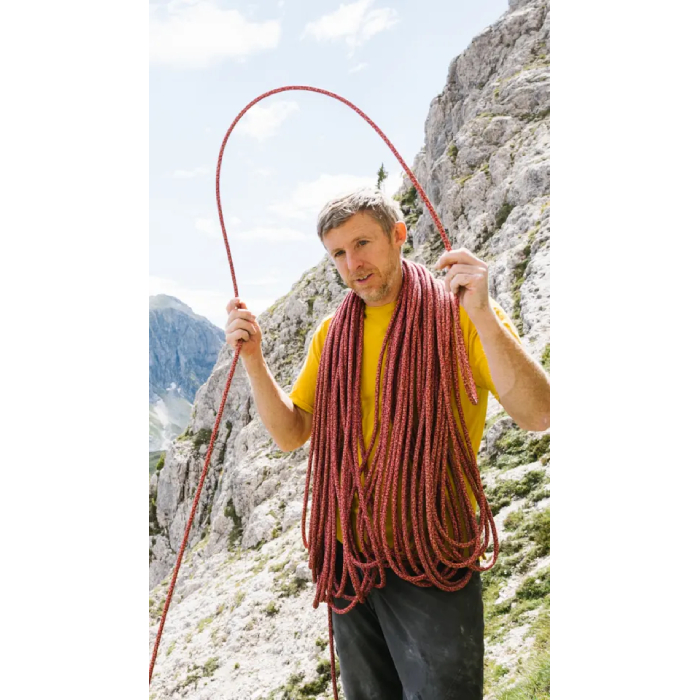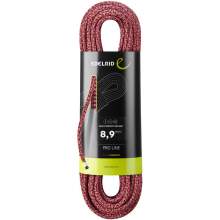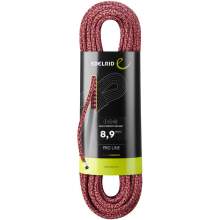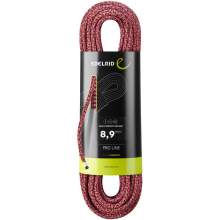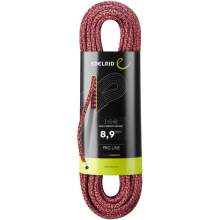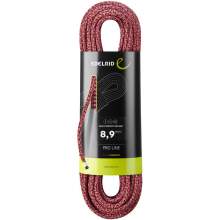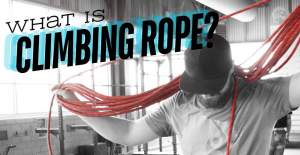How to use Edelrid rope, safety, storage, transport, care, lifespan and replacement with instructional pictures.
8.9mm Swift Protect Pro 40m 2xDry
Description
The first dynamic single rope with a sheath that includes aramid, for markedly increased cut resistance. Thanks to a special processing method, the Swift Protect Pro Dry remains dynamic. Despite reinforcement with aramid and the overall higher sheath content, the impact force remains within the required standard. These characteristics make the Swift Protect Pro Dry the ideal lead climbing rope and the perfect companion for alpine climbing and mountaineering.
- Thermo Shield treatment for perfect handling
- When used as a single rope, not suitable for top-rope or workout climbing
- Long-lasting water-repellent and dirt-resistant, thanks to the Pro Dry finish
- Water absorption less than 2% as per UIAA Water Repellent Test
- 3D lap coiling enables instant use without tangles
- Higher sheath content and aramid processing for increased cut resistance under load, e.g. over sharp edges
The first dynamic single rope with a sheath that includes aramid, for markedly increased cut resistance. Thanks to a special processing method, the Swift Protect Pro Dry remains dynamic. Despite reinforcement with aramid and the overall higher sheath content, the impact force remains within the required standard. These characteristics make the Swift Protect Pro Dry the ideal lead climbing rope and the perfect companion for alpine climbing and mountaineering.
- Thermo Shield...
Retail price
This Product is Hard to Find.
We don’t know where you can buy this item online in the US. We’ll continue to check all the major retailers and will update this page as soon as we find one.
If you know where to find this online in the US, let us know, and we’ll add the link.


| Weight | 53.0 g/m 4.673 lbs / 2120 g |
| Diameter (millimeters) | 8.9 mm |
| Length (meters) | 40 m |
Rope Type  | Single/Half/Twin |
UIAA Falls (Single / Half / Twin)  | 6 falls / 18 falls / 30 falls |
Dynamic Elongation (Single / Half / Twin)  | 29.0 % / 26.0 % / 25.0 % |
Static Elongation (Single / Half / Twin)  | 5.5 % / 5.2 % / 3.5 % |
Impact Force (Single / Half / Twin)  | 9.90 kN / 7.30 kN / 11.80 kN |
Dry Treatment  | Sheath & Core UIAA Certified Dry |
| Sheath Proportion (%) | 36.0 % |
| Sheath Slippage (mm) | |
| Type of Middle Mark | Marking |
| Rope End Marker | None |
| Certification | CE |
RFID / NFC Option  | None |
No reviews yet.
All in all, the Edelrid Swift Protect Pro dry rope seems like a great step forward for rope design. But, how does it perform? When you first use it you are likely to think the rope is fairly stiff. However, it soon softens up and works well with any belay devices we have used it with. The tight weave also inspires confidence that it will be durable and wear resistant. The other thing to note is that the sheath is quite rough in the hand. This actually makes gripping the rope very easy. This is a great benefit when using the rope in an instructing capacity.
After an uncertain start I have been very impressed with the Edelrid Swift Protect Pro Dry. Its increased cut resistance increases my safety margin when mountaineering with two clients, for only a nominal weight gain. This together with it being easy to hold in the hand makes it my go to rope for mountaineering. I think the rope will be of particular interest to guides and instructors, but this would also be my rope of choice when climbing with friends on gnarly alpine routes. When it wears out I will definitely be purchasing another to replace it.
Overall, the Swift Protect Pro Dry 8.9 blew my mind. There is nothing else on the market like it, and I can’t believe that it took rope companies this long to figure something like this out. Since I’ve started climbing, rope innovation has mainly involved them just getting incrementally skinnier. As a gear nerd, the introduction of aramid has me really excited about what the future of climbing ropes will look like. I would recommend it to anyone that is looking for the ultimate alpine climbing rope, with the greatest amount of built-in safety available in such a lightweight package. But I would also recommend it to anyone who sport climbs in an area with particularly sharp rock or just wants that added level of cut resistance.

